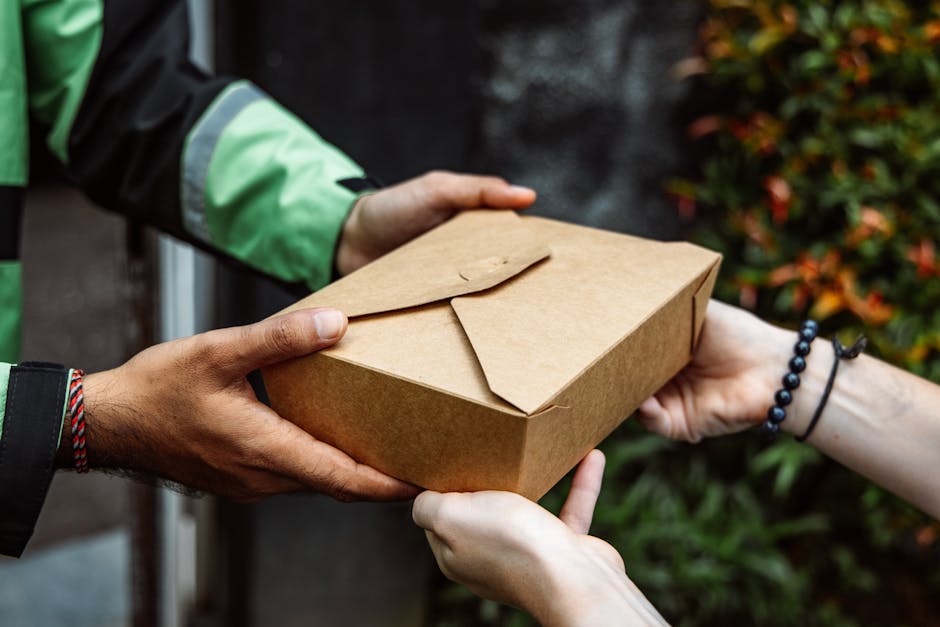Best Practices for Packaging and Presentation in Delivery Services

Packaging and presentation play a critical role in delivery services, not only ensuring that products reach their destination intact but also contributing to the customer experience. With the rise of e-commerce, consumers have come to expect fast and reliable deliveries, yet often overlook how packaging impacts the success of this process. Businesses, on the other hand, know that poor packaging can lead to damaged goods, returns, and dissatisfied customers. Therefore, striking a balance between protective packaging and aesthetic presentation is key to standing out in an increasingly competitive market.
1. Ensuring Product Protection
The primary function of packaging in delivery services is to safeguard the product from damage during transit. A package may go through several handling stages, including being loaded onto trucks, shipped across long distances, and delivered by couriers who may not always handle it with care. To avoid product damage, businesses need to invest in high-quality materials designed for protection.
Bubble wrap, foam inserts, and air cushions are commonly used for fragile items like electronics or glassware. These materials absorb shocks and prevent items from moving around inside the box. For heavier products such as furniture or appliances, sturdier options like double-walled corrugated boxes are often recommended because of their ability to handle significant weight without collapsing.
Additionally, choosing the right size for packaging is essential. A box that's too big might lead to unnecessary shifting of the product inside, while one that's too small could compress items or fail to provide enough padding. Companies like Amazon are known for adopting "right-sized" packaging technology that measures items before selecting an appropriate box size, thereby reducing waste and damage risks.
2. Sustainability Considerations
With environmental concerns growing among consumers, sustainability has become a significant factor in the packaging industry. Many companies now incorporate eco-friendly materials into their delivery processes as a way to reduce their carbon footprint and appeal to environmentally conscious customers.
Recyclable materials such as cardboard, paper-based padding, and biodegradable plastics are becoming more popular alternatives to traditional plastics. Brands like Patagonia have transitioned to using 100% recycled poly bags for their clothing deliveries. This shift not only cuts down on plastic waste but also shows that businesses can maintain product protection while being environmentally responsible.
Another sustainable practice is reducing excess packaging. Overpacking (using multiple layers of unnecessary padding) can frustrate customers and generate more waste. For example, minimalistic packaging strategies involve using just enough materials to protect the product while keeping the environmental impact low. This approach also helps reduce shipping costs since lighter packages require less fuel for transportation.
3. The Role of Aesthetic Presentation
Apart from protection and sustainability, packaging serves as a branding tool that influences customer perception. Well-designed packages create a memorable unboxing experience that leaves a lasting impression on recipients. This trend is particularly prevalent with luxury brands like Apple or fashion companies like Gucci, where unboxing has become almost ritualistic.
The concept of "unboxing" has gained popularity thanks to social media platforms such as YouTube and Instagram. Here, influencers share their experiences of receiving beautifully packaged products with their followers. This practice not only promotes brand visibility but also drives consumer engagement through visually appealing content.
To enhance presentation while maintaining practicality, companies can use branded boxes with custom designs or printed logos. Even simple touches like thank-you notes or personalized messages can elevate the customer's experience without adding significant costs. These elements turn what would be an ordinary delivery into something that feels more thoughtful and curated.
4. Practical Tips for Optimizing Packaging Efficiency
Balancing aesthetics and functionality in delivery packaging requires careful planning and attention to detail. Below are several practical tips that businesses can follow to improve their overall packaging approach:
- Select durable materials: Use materials like corrugated cardboard for heavy items and bubble wrap or air cushions for fragile products.
- Optimize box sizes: Always choose boxes that fit products snugly without leaving excessive room for movement.
- Embrace minimalism: Reduce excess padding where possible while still ensuring protection to cut down on waste.
- Incorporate branding: Include branded elements such as printed logos or custom designs on boxes for a personalized touch.
- Sustainability: Use recyclable or biodegradable materials where feasible to cater to eco-conscious consumers.
Sustainability Comparison: Traditional vs Eco-Friendly Materials
| Material Type | Pros | Cons |
|---|---|---|
| Traditional Plastics (e.g., bubble wrap) | - Highly protective- Cost-effective- Widely available | - Non-biodegradable- Contributes to landfill waste- High carbon footprint |
| Recycled Cardboard | - Recyclable- Lower environmental impact- Good structural integrity | - Less cushioning compared to plastics- May require additional padding for fragile items |
| Biodegradable Plastics | - Environmentally friendly- Breaks down over time- Reduces long-term waste impact | - Often more expensive- Limited availability in some regions- Not as durable as traditional plastics |
The table above highlights how traditional materials compare against eco-friendly alternatives regarding both benefits and drawbacks. While conventional plastics offer excellent protection at lower costs, they contribute heavily to environmental issues like landfill waste. Conversely, biodegradable options present an ethical choice but may be more costly and less durable than their plastic counterparts.
This comparison suggests that businesses should weigh these factors based on their operational needs and values when selecting packaging materials. The right packaging strategy is vital for any business involved in delivery services, balancing protection with sustainability and visual appeal can make a significant difference in both cost savings and customer satisfaction.
This focus on presentation goes beyond just aesthetics; it affects how customers perceive your brand long after they've received their order. As consumers continue placing higher value on sustainability and personalization within deliveries, understanding these best practices will be essential for businesses.
